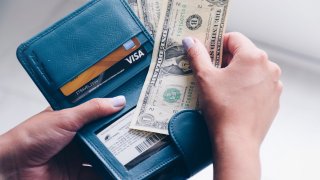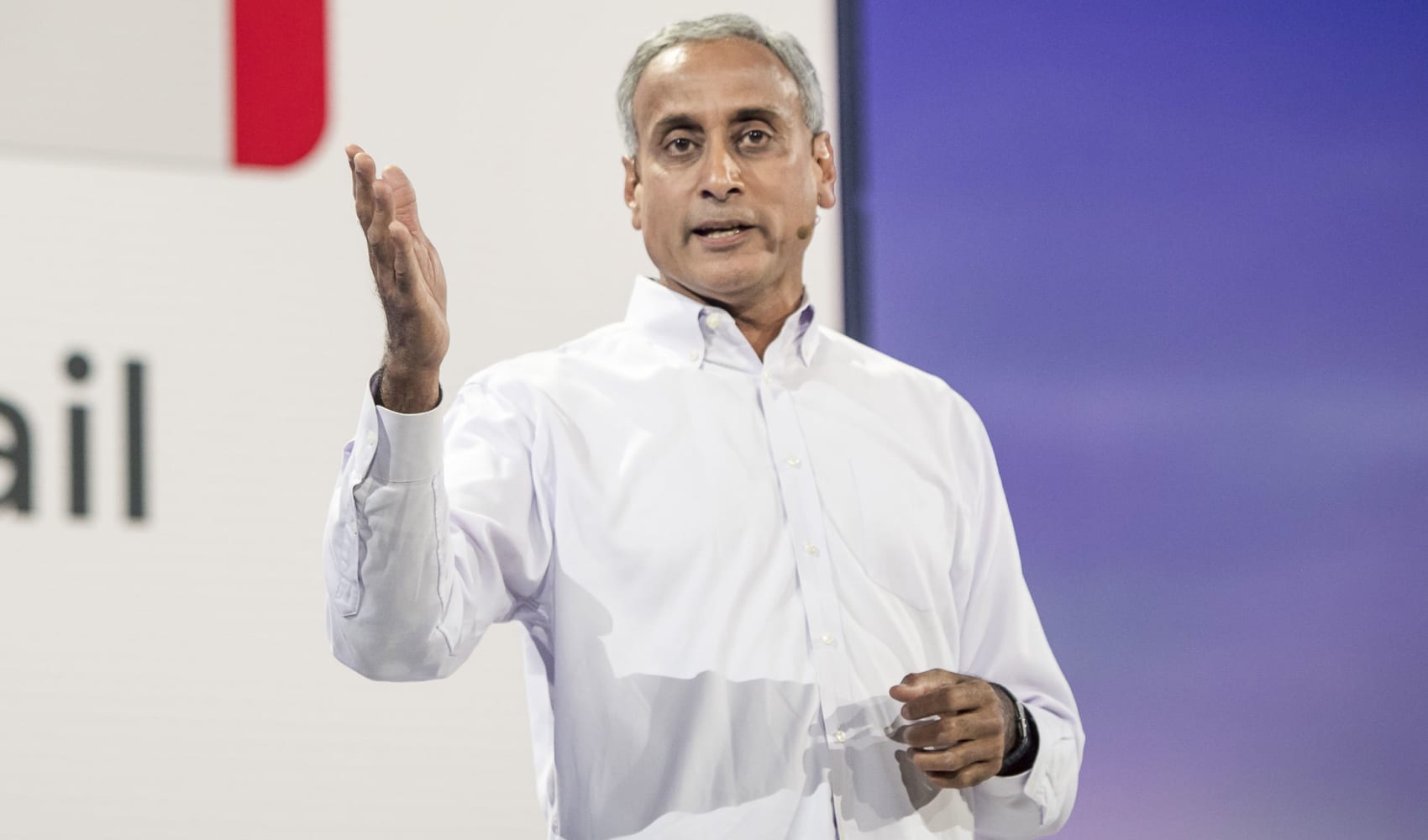
"I'm going to spend less this month."
We've all said these words at some point in our lives. But changing your bad money habits isn't easy. Most of our impulsive spending happens when our brain is on autopilot. The solution is to implement both short-term and long-term strategies which upend our reactive spending routine.
From giving your wallet a cash makeover to visualizing your financial future, here are some tips that have worked not just for me — a financial therapist of 17 years — but also for my clients:
1. Give your wallet a cash makeover.
Back when I was paying off credit card debt, I would take out small amounts of cash every week and put them in my wallet. The goal was to have as much cash left over as possible by the end of each week.
Paying with credit cards or phone apps is always more convenient, but exclusively using cash for a period of time to feel and visualize the ways spending drained my resources was enough of a jolt to alter my behavior.
There's something about removing the physical bills, counting out the price and handing over the money that drives home the weight of any purchase.
Money Report
I still follow this rule. Unless I have any important spending plans, I keep my wallet as simple as: $20 to $40 in cash, one or two credit cards, any gift cards, my driver's license, a few business cards and a Post-it note (taped to the side) listing top three money goals.
Psychologist Mary Gresham takes it a step further: She recommends carrying a $50 or $100 bill, since most people tend to think twice before spending bigger bills — because they see them as "special money."
2. Know your patterns (and pitfalls).
Identifying your habits requires accepting two truths about your relationship with money:
- Your emotional state affects your purchasing choices.
- You place symbolic value on money and what you buy with it.
Consider the feelings that prompt you to reach for your wallet. What emotional needs are you filling with this behavior? Are you chasing a sense of accomplishment? Or spending to distract from anxiety?
Next, reflect on what you buy and why. Do you identify as the type of person who treats other people to lunch or owns the latest trend item?
Being increasingly aware of your unique emotional and symbolic triggers will help you recognize when you are at risk to overspend before the opportunity even arises.
3. Hit pause.
Spontaneous purchases, even little ones, seem innocent in the moment, but together add up to significant amounts of money.
To curb the buildup of these expenses, I try to put a 24-hour pause rule on most purchases. Saying "no" in the moment is a hurdle, especially when "yes" is an autopilot response. But saying "I'll buy it tomorrow" makes it much easier to walk away from the register or the computer screen.
This extra time to reflect on the choice brings the purchase's necessity (or lack thereof) to light and breaks the spell of impulsivity.
4. Get excited about your goals.
According to Prudential's recent Financial Wellness Census, 50% of Americans feel their financial mobility is fixed — meaning they think, no matter what the future holds, they are powerless to improve their current money situation.
The best way to combat a discouraged mindset is to visualize the future you want and set goals for getting there. Once you curb your spending, what will you do with that money?
Write down your top three goals and post them where you can see them everyday. Being reminded of what you are working toward will make giving up familiar spending habits seem less tedious and more positive.
For example, my biggest goal is retirement. But I was never able to connect with those giant retirement numbers that I saw touted by money experts; I understood the math, but the amounts were so outside my frame of reference that it seemed abstract.
So I created a monthly "retirement budget" by visualizing where I'd like to live, the kind of activities I'd like to do, and a heaping helping of money for health care-related expenses.
This helped me get to a "big number" that felt relevant and personal. From there, it was easier to organize my behavior to meet the rate at which I'd need to save and invest to hopefully arrive there by the time I stop working.
5. Date your money.
It's normal to respond to negative feelings about spending by ignoring the problem. If this is your tendency, you may avoid looking at bank statements and bills until it is absolutely necessary, which provides momentary relief, but breeds more anxiety down the road.
I learned the hard way that the more time you spend with your money, the more confident and capable you become in making desired changes in your life and autopilot settings.
To incentivize yourself to get it done, think of reviewing your finances as a weekly date, rather than a chore. Make it an experience you look forward to every week by coupling it with something you enjoy, like watching a movie, listening to a playlist of your favorite songs, opening a bottle of wine, or ordering takeout.
6. Make automation your friend.
When battling unwanted spending habits, it is helpful to take some of the risk out of the equation by automating payments for essential bills, as well as contributions to savings and major goals.
Ensuring that your priorities are met at the start of each month or pay cycle will ease the anxiety of day-to-day purchasing decisions.
I love this strategy because it provides a clear picture of your discretionary income each month and allows you to spend it guilt-free.
Amanda Clayman is a psychotherapist specializing in financial therapy. Her approach is to decode how thoughts, feelings and associations shape our money decisions — and identify how those patterns both serve and limit us. She is also a Financial Wellness Advocate at Prudential, and her work has been featured in The New York Times, The Wall Street Journal and Forbes. Follow her on Twitter
@mandaclay.
Don't miss:
- Never, ever use a debit card,' warns fraud expert and ex-con artist—here's what to do instead
- I tried 'Kakeibo': The Japanese art of saving money—and it completely changed how I spend my money
- I retired at 34 with $3 million—here are 5 downsides of early retirement that no one tells you
Check out: Chase Sapphire Preferred is offering a massive 80,000-point bonus for a limited time






